Tibet
prior to 1217
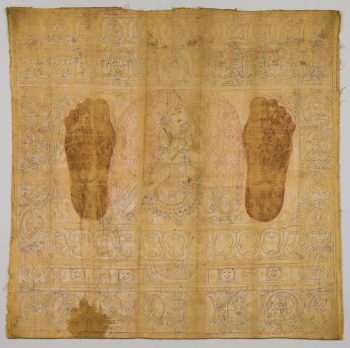
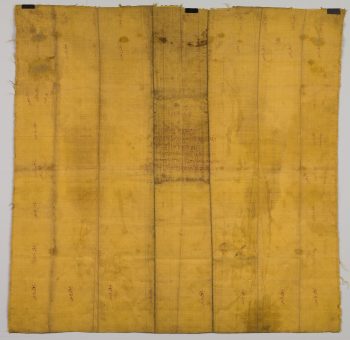
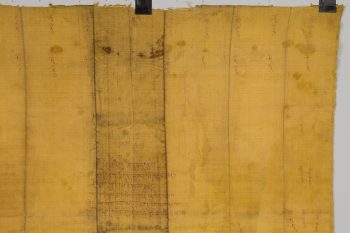

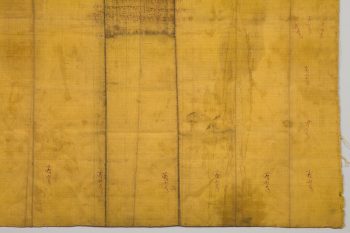
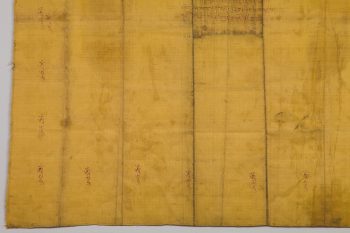
Tibet
prior to 1217






This drawing was not meant to be hung on the wall as a work of art, but once folded, and possibly placed in an amulet, it was intended solely for veneration. It is composed around the footprints, which share a lotus throne with the deity at their center. The shapes of the footprints have certainly been idealized, but the spot at the lower left may well have resulted from the application of original prints. Although not painted, all of the figures have been executed in great detail. Beside black, red was used to accentuate features and for the captions identifying the figures. At the center of this drawing the deity Chakrasamvara shares his throne with the footprints of a Tibetan teacher, likely those of Jikten Sumgon, the founder of the Drigung Kagyu School (1143–1217). This teacher, depicted in the center of the second row, concludes the teaching lineage that begins in the top row. He is flanked by the five female and male deities of the Guhyasamaja Tantra. To the sides are eight great mahasiddhas presented in a form typical for early Drigung Kagyu School painting, and in the bottom row are eight protector deities, including Four armed Mahakala, Jambhala, Ganapati, and Pelden Lhamo.
A religious movement that originated in India around the fifth to seventh century with sacred writings and esoteric teachings and practices transmitted from teacher to student through initiation. These remain an important part of Hinduism and Buddhism today.
The transmission of teachings from one generation to the next, from teacher to student, traced all the way back to the Buddha without interruption. A complete lineage is essential in Tantric Buddhist practices as it makes the blessings of the teaching more powerful.
Tantric deities personify various enlightened qualities and are the focus of esoteric religious practices (tantras) that aim to swiftly and radically transform one’s understanding of reality.
Today, Tibetans primarily inhabit the Tibetan Plateau, situated between the Himalayan mountain range and the Indian subcontinent to the west, Chinese cultural regions to the east, and Mongolian cultural regions to the northeast. During the 7th to 9th century, Tibetan rulers expanded their empire across Central Asia, and established Buddhism as the state religion.
Get the latest news and stories from the Rubin, plus occasional information on how to support our work.